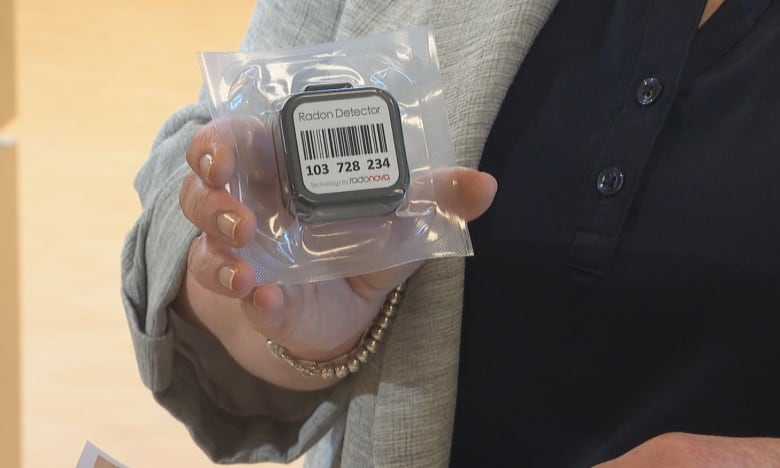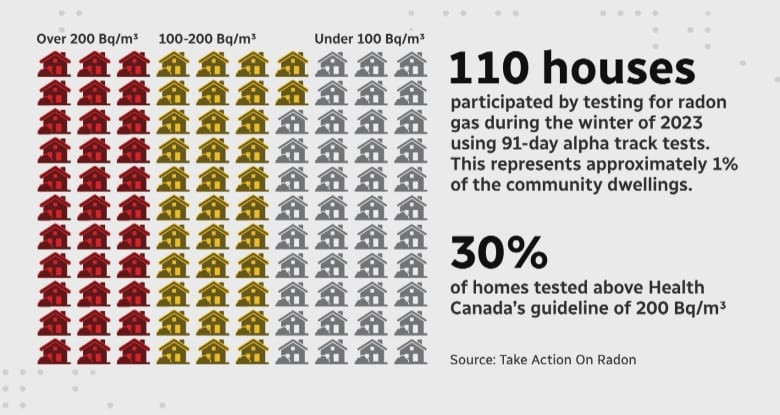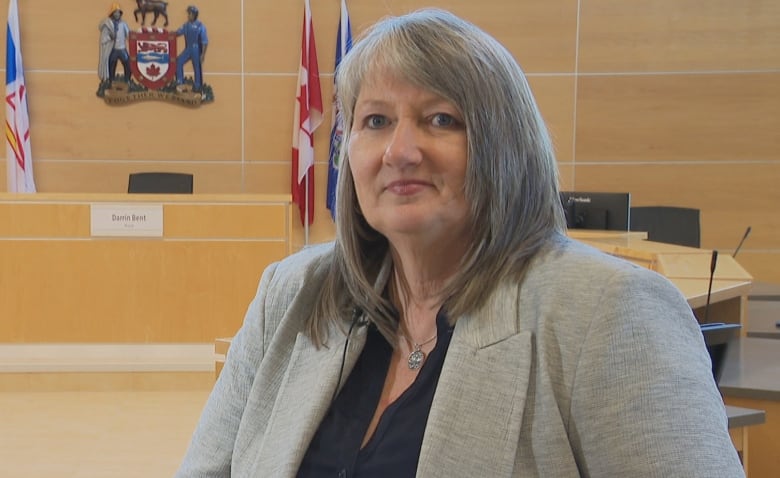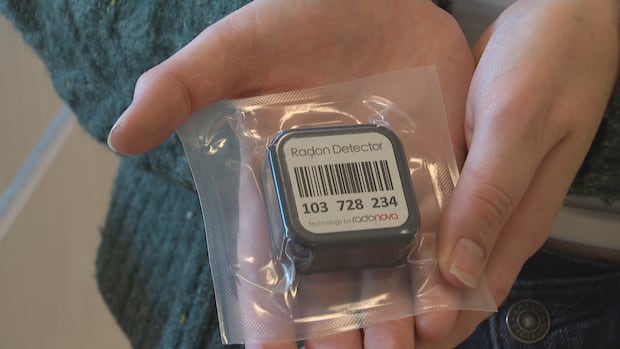

You can’t see it, you can’t smell it and you can’t taste it — and it’s the No. 1 cause of lung cancer for non-smokers.
Radon is a natural radioactive gas that comes from the ground. It isn’t a problem when it’s released into the air outside, but it’s dangerous when trapped inside our homes.
Last winter, 110 homes in Conception Bay South were tested for radon gas, and 30 per cent of them had levels above Health Canada’s guidelines.
“It was a little bit of a surprise, maybe because we didn’t know a lot about it,” said Deputy Mayor Andrea Gosse. “But since that time we’ve become more educated and we want our community more educated.”
Now municipalities in Newfoundland and Labrador — including C.B.S. and Mount Pearl — will take part in November in what’s called Radon Action Month.

The municipalities are encouraging residents to test their homes for radon, and are providing free test kits from the Health Canada-funded Take Action on Radon campaign.
The test is a small device that you place in your home, at the lowest lived-in level. After 91 days, you put in an envelope and send it to a lab to be tested.
You can’t see, smell or taste it, and it causes lung cancer. The CBC’s Abby Cole breaks down how to find out if radon has made your house its home.
“Simple. It’s like it’s like an ant trap,” said Gosse. “Nothing to do, nothing to monitor. I even forgot it was in the house until I got my e-mail and said, oh, I’ve got to put that together now and send it in.”
Gosse said there is no reason not to find out if your home contains radon.
“It’s a proactive measure and a very simple … I would recommend, you know, residents take part.”
Some test kits not suitable
Conception Bay South has more test kits on the way, and Mount Pearl distributed all 400 of its kits within hours of publicizing them.
Consumers can buy their own tests in stores, but not all are recommended by local experts.

For instance, CBC went to a Home Depot store to see what radon test kits are available, and found Pro-lab’s Long-Term Radon Gas Test Kit.
However, Pam Warkentin, Take Action on Radon’s executive director, says this test is not on the Canadian National Radon Proficiency Program’s list of providers. She said customer feedback demonstrated it doesn’t properly report radon levels. The lab for the test kit is also in the U.S., which she said has caused issues with timely testing.
Warkentin said consumers should refer to the device list on the Canadian National Radon Proficiency Program website before purchasing a test kit.
“So we do really want to caution people to make sure that they when they purchase them that they check our listing to buy one that is working,” said Warkentin.
To buy a radon test kit, the Take Action on Radon website lists Transfer Radon, the only certified company in N.L.
They sell the recommended Radtrak³ Alpha Track Long-Term Test, and other short-term and digital tests.
“Health Canada recommends that anything over 200 Bq/m³ be mitigated … within two years,” said Katie Thorne, Transfer Radon co-owner.
“It can be anywhere. So you don’t really know if your neighbour might have it, or you might … The only way to know is to test.”
Download our free CBC News app to sign up for push alerts for CBC Newfoundland and Labrador. Sign up for our daily headlines newsletter here. Click here to visit our landing page.
